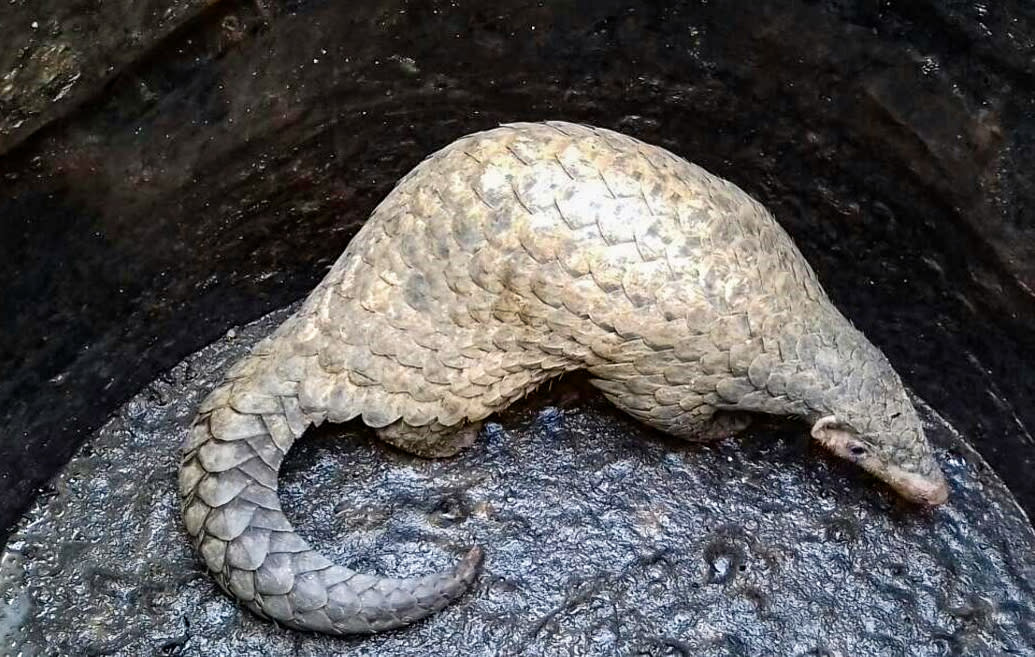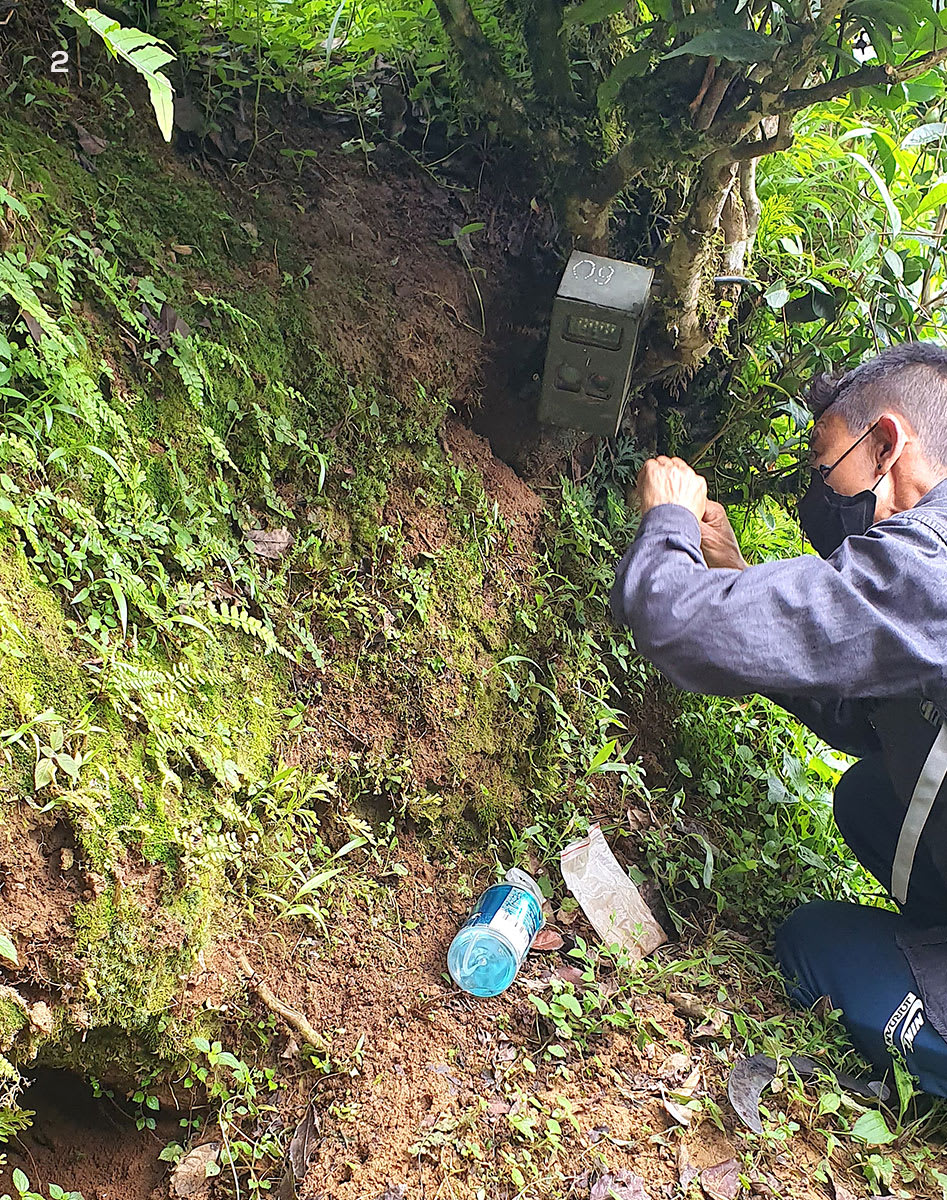 Listen to this article
•
15:34 min
Listen to this article
•
15:34 min
Turbulence in the Tea Landscape
Situated in the sub-Himalayas of West Bengal, India, Darjeeling is known for its globally famous tea. Darjeeling’s tea plantations came up in the 1800s when the British cleared large tracts of mid-hill forests for tea production. These plantations may appear as stunning green hills innocently producing coveted teas for the world, but there are multiple challenges in this seemingly peaceful tea landscape that make it quite turbulent. By “tea landscape”, I refer to areas predominantly under tea cultivation such as tea plantations, tea estates, or tea-growing regions.
My colleague Roshan and I were in Darjeeling’s tea landscape for our fieldwork, installing camera traps in the Selimbong tea estate and adjoining forests to confirm the presence of pangolins there.
Pangolins (also known as scaly anteaters) are unique scaled mammals that live in burrows and subsist on ants and termites. They were little-known in this area around 2010, until they came into prominence for being the most trafficked mammal in the world due to the huge demand in the illegal wildlife trade, as their scales are considered to have medicinal value. Between 2009 and 2017, TRAFFIC — WWF India reported seizures of 6,000 kg of pangolin scales (around 650 poached pangolins). All eight pangolin species found in Asia and Africa are threatened; the Chinese pangolin is “Critically Endangered” according to the IUCN Red List.
It was June 2017, and our research protocol and timelines were set. We had been assessing the presence, distribution and abundance of the pangolin in the tea plantations of Darjeeling. Suddenly, everything came to a standstill when a general strike was called in response to the state government’s decision to make the Bengali language compulsory across West Bengal (including in the Darjeeling hills). Darjeeling opposed this decision with an indefinite strike.
Roshan, who was coordinating our fieldwork, said it would be impossible to retrieve our camera traps or routinely check the cameras for battery life, vandalism, or data. No one was working, so even occasionally visiting the cameras would amount to defying the strike. Markets, institutions, business establishments, offices, transport, tea plantations were all closed. We departed Darjeeling, leaving our cameras in the field, only to return four months later when the strike was called off.

Cover Photo: The Chinese pangolin, found in the foothills and mid-elevation belt of the Himalayas, occupies a variety of habitats, from forests and grasslands to agricultural fields and tea plantations. Photo: Dibya Rai
Our camera traps were not functioning by then and had become covered with overgrown weeds and tea bushes. It took time to trace and retrieve them. However, to our great delight, we found there were pictures of the Chinese pangolin (Manis pentadactyla) from the Selimbong tea estate. Going through the pangolin images, I realised that the pangolins were an integral part of the landscape and had been a part of this turmoil as much as people were. So what are the consequences of such political turmoil, disruption and other challenges of the tea plantations, on them?
Tea plantations have many challenges. These range from labour issues and conflicts over rights to ageing tea bushes affecting production and quality, plummeting yields and tea prices, losing export ground, climate change, and competition from other tea-producing countries, especially Nepal. As a global business, the tea industry is impacted by events both within and outside the country. The 2017 political unrest led to the industry losing export contracts, and a few tea estates closed down with massive economic and livelihood losses. COVID-19 served to further exacerbate the strife in the landscape.
Pangolins don’t make news
Covering approximately 17,500 hectares in the Darjeeling hills, 87 tea plantations are spread across a low to mid-elevation belt and contribute to major land use and the economy and employment of the region. The persistent economic and socio-political commotion in Darjeeling’s tea plantations has ramifications on the people living and working there.
Today, after many years of research and observations, we know that almost 80 per cent of the tea landscape, holds and serves as a significant refuge to two species of pangolins: the Indian and Chinese pangolins. However, we still know very little about what happens to wildlife like pangolins when the landscape comes under challenges like the one witnessed in 2017. Or what will happen to coexisting species in a perpetually troubled landscape? We don’t know. They make no news.

Engagement with Pangolin Conservation
The lack of ecological information, conversation, and dialogue on these species in this landscape indicates the low priority and concern afforded by the species. In 2014, we began our engagement with pangolin research and conservation in the Darjeeling tea landscape, with ecological research and outreach to close the existing knowledge gap on the species. Our work includes assessing the presence, distribution, and abundance of the Chinese pangolin. We also focus on awareness building amongst various levels of stakeholders which range from local school children to local enforcement agencies. Although it is a refuge for the pangolin, there has been a significant decline in its population, to the extent that the animal has been wiped out in a few sites (based on local ecological knowledge surveys and interactions).
The local community values the pangolin for various reasons: meat, use in local medicinal practices, belief that their scales ward off evil spirits, and scales as an income source when sold. Based on local ecological knowledge, besides climate change, pesticide use, and habitat loss, hunting stands out as the main perceived driver for the decline of this species. Hunting occurs for meat, trade, and entertainment (for instance where young boys may kill the animal just for fun).
The Darjeeling tea landscape is a transboundary area that shares an open border with the Ilam district in the east and the Jhapa district of Nepal in the west. These borders are prominent illegal wildlife trade routes. Open borders and proximity to strategic locations like Siliguri which shares borders with Nepal, Bhutan, Bangladesh, and the Northeastern states, facilitate pangolin trade from Darjeeling. The conflict, political unrest and the gradually declining tea businesses add to the vulnerability of locals in the tea landscape. Indulging in pangolin trade can be a way to earn an extra income. As Lal (name changed), a resident from the Soom tea estate told me, “Hunting is still prevalent. The rate for scales varies according to the type of scales, the quantity, and the people involved in the deal.”
Pangolins losing ground
An important ecological observation is that pangolins breed and rear cubs in undisturbed private agroforests of the landscape. This finding indicates that we need more undisturbed areas for breeding and rearing cubs, within this landscape dominated by humans. Since these are private agroforests, changes and alterations may happen at any time based on the owner’s interests. The pangolin’s need for these spaces vie with the possibility of alterations in land due to the failing tea industry economy, proposed tea tourism, private ownership of agroforests in the landscape, human-wildlife conflict, and people’s aspirations for development. All of these factors contribute to pangolins losing their habitat.
Will the pangolins tide over the turbulence?
In the tea industry, business and financial interests take precedence. Species conservation is not a priority. Legal instruments like the Wildlife Protection Act of India (1972) are less effective due to the lack of any targeted conservation strategies in such landscapes.
What happens to the pangolins? Conservation and dialogue around pangolins currently compete with the tea industry’s pressing problems, setbacks, sociopolitical developments, and other dynamics. Consequentially, conservation prospects for pangolins are currently bleak.
If the tea landscape is not valued as a pangolin refuge, if pangolins don’t figure on the agenda, and they aren’t made a part of the dialogue and news, the possibility of them surviving the turbulence of the tea landscape is very low. It is not only the famed Darjeeling tea and tea industry struggling to survive; coexisting pangolins are as well.







